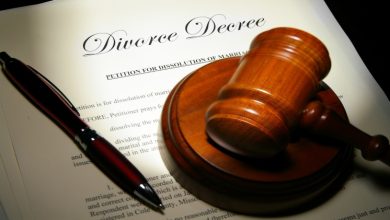What is the Failure Rate of FUE Hair Transplant?

Follicular Unit Extraction (FUE) is a hair restoration technique that removes individual hair follicles from a donor site and implants them in areas with thinning or no hair. This method is celebrated for being minimally invasive and for leaving almost no visible scarring.
FUE hair transplant offers a natural-looking result by carefully extracting and implanting grafts one by one. The benefits include improved hair density, enhanced hairline aesthetics, and a significant boost in self-confidence.
In a good FUE hair transplant clinic in Singapore, you may be approved for this procedure if you’re experiencing pattern baldness, or thinning hair. It may also be ideal if you’re looking to correct hair loss without undergoing a large-scale surgery.
How Often do FUE Transplants Fail?
To begin with, a hair transplant is generally considered a failure if more than 30% of the transplanted grafts do not survive. So, what is the failure rate of FUE hair transplant? You may wonder.
Now, in FUE procedures, the failure rate is remarkably low, with success rates typically ranging from 90% to 95%. This high success rate can be attributed to the precision of the extraction and implantation process. In skilled hands, the majority of grafts take root and begin to grow as natural hair within a few months following the procedure.
Despite these impressive statistics, there are several factors that can influence the overall success of a transplant. The expertise of the practitioner, the quality of the donor hair, and your individual healing response, for example all influence the success rates.
Even under optimal conditions, some patients may experience variations in graft survival. Minor discrepancies in the extraction process or small variations in the implantation technique can occasionally result in lower graft survival.
However, such issues are incredibly rare when the procedure is performed by experienced professionals who follow strict protocols. It is important to note that a slight loss of grafts does not necessarily indicate failure.
Some patients may experience what is known as “shock loss” which is essentially a temporary shedding of transplanted hairs immediately after the procedure. This effect does not imply a permanent failure.
Instead, it is rather a natural phase as the hair follicles adjust to their new environment. The key takeaway is that FUE hair transplant remains one of the most reliable methods for restoring hair, with failure rates that are statistically very low.
How Common is Shock Loss after FUE?
To begin with, shock loss after FUE doesn’t mean the hair transplant has failed. In fact, it’s a normal part of the hair growth cycle that is triggered by the procedure.
It usually around 2 to 4 weeks after the surgery. Now, not everyone will experience shock loss. Studies estimate that between 50% and 80% of patients will experience it to some degree. The extent of the shedding can vary from mild to more noticeable, and in some cases, it may not happen at all.
Please, note that this is only temporary, and the hair should start growing back within a few months. If you notice shedding in both the transplanted area and surrounding regions, it’s a sign that the hair follicles are adjusting.
This shedding phase can last for several weeks, but eventually, the hair will regrow as the follicles settle into their normal growth cycle. Please, stay patient during this time, as the process can take several months.
To help with recovery, please follow your surgeon’s post-operative care instructions. Importantly, avoid scratching or rubbing the transplanted area, as this could disrupt the healing process.
Is FUE Hair Transplant Safe?
FUE hair transplant is generally recognized as safe. However, as you’d imagine, it is not entirely without risk.
One potential downside of FUE hair transplant is that, in rare cases, the procedure may result in less-than-optimal graft survival. The success of the procedure depends heavily on the technique and experience of the surgeon.
If more than 30% of the grafts fail to survive, the overall result might be less dense than anticipated. Such outcomes may demand for further corrective procedures or touch-ups.
This is why it is recommendable for patients to have realistic expectations and to discuss potential risks during their consultation. Apart from graft survival, another risk to consider is the occurrence of minor complications.
Some patients may experience localized redness, swelling, or mild discomfort in the donor or recipient areas after the procedure. These side effects are usually temporary and should resolve with proper care and time.
There is also the risk of visible scarring in the donor area, although FUE is designed to minimize such marks. Each case is unique, and individual healing responses vary. Below are two key signs to keep an eye out for if you suspect the transplant has not met expectations:
- Poor Growth and Density: This occurs when a significant portion of the transplanted grafts do not produce hair. It can lead to patchy areas and an uneven appearance. You may notice that the hair does not fill in as expected, which can affect overall satisfaction with the outcome. Persistent low density may require additional sessions to achieve the desired fullness.
- Poor Healing: If the surgical sites do not heal properly, you may experience complications. Poor healing can cause prolonged redness, irritation, or even infections. This can compromise the overall effectiveness of the transplant and necessitate further medical intervention. Proper post-operative care is recommended to encourage proper healing and long-term success.
Final Thoughts
FUE hair transplant is an effective method for restoring hair, with a very low failure rate when performed by skilled professionals. While challenges like shock loss or less-than-optimal graft survival can occur, they are generally temporary and manageable with proper care.
If you are considering a FUE hair transplant in Singapore and want to learn more about its success rates, potential risks, and maybe your suitability, the specialists at our clinic are happy to help. Contact our experienced team today for a personalized consultation. To book an appointment, please call or visit us at;
Terra Medical Hair & Aesthetic Clinic
9 Scotts Road #11-02/03 Scotts Medical Centre,
Pacific Plaza, Singapore 228210
Phone: +65 6909 0927





